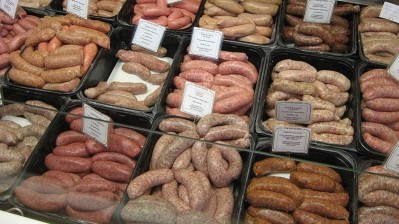Review highlights possibilities for healthier processed meat

The review, published in the journal Trends in Food Science & Technology, notes that whilst meat and meat products are generally seen to be a good source of proteins, group B vitamins, minerals and trace elements, many consumers still view meat products negatively – due to their content of fat and saturated fatty acids, cholesterol, sodium and any other substances have been linked with ill health. As such, the authors said that industry needs to focus attention on innovations that may produce healthier meat products.
The reviewers, led by Fidel Toldrá of the Institute of Agrochemistry and Food Technology (CSIC), Spain, noted that several strategies for the production of healthier meat based products are already being explored, adding that they are generally based on reducing the content of the unhealthy substances, or promoting the presence of other substances with healthy benefits.
“These strategies include fat reduction, the improvement of the fatty acids profile, salt reduction, the incorporation of functional ingredients, among others,” they explained.
Less bad
Toldrá said that strategies to remove or lower unhealthy ingredients from processed foods are an important goal for improving the image of processed foods.
The authors explained that with very high salt intakes in Western societies, “the control of salt intake is a must in order to reduce long term health-related costs,” noting that the contribution of processed meats to the daily sodium intake “is very high in developed countries.”
“There are several strategies for sodium reduction and, in fact, a large numbers of patents, increasing year by year, have been filed,” they said.
“The most simple consists of the direct reduction of salt in the meat product even though only a partial reduction is possible due to the technological contributions of sodium chloride ... Another easy strategy consists in the replacement of sodium chloride by potassium chloride,”
They noted that the sodium content of a dry-cured pork loin could be reduced to 50% by using a mixture of potassium chloride, magnesium chloride and calcium chloride, without affecting its sensory quality.
“Similar mixtures of chloride salts could reduce the sodium content of dry-cured hams by about 40% while keeping the sensory and safety quality,” they said.
In addition to reducing sodium levels in meat products, Toldrá and his colleagues said that reducing levels of nitrates and nitrites could have benefits, noting that the use of only meat and salt as ingredients for Parma ham “demonstrates that is possible to produce nitrite-free dry-cured hams without affecting safety or sensory quality.”
More good
The reviewers added that the addition of functional ingredients to products could also help to improve the unhealthy image of processed meats, but noted that the effect of the ingredients added to meat products could vary depending on the type of animal species and processing methods used.
“This is the case of specific fatty acids like omega-3 fatty acids, or other unsaturated fatty acids, selenium and vitamin E,” said Toldrá and his team.
They said that many studies have been performed for the incorporation of omega-3 fatty acids in meat because of their ability to reduce the levels of LDL-cholesterol and blood triacylglycerols, adding that the increase of omega-3 fatty acids and/or other unsaturated fatty acids “would balance in part the negative effects of saturated fats that tend to increase the levels of LDL-cholesterol.”
They noted that vegetables have also been used as a source of functional ingredients, especially antioxidants, for processed meats.
“For instance, the addition of tomato peel to enrich dry-fermented sausages in lycopene, and the use of herbs and spices, especially rosemary, green tea, garlic and oregano, as a rich source of antioxidants (mainly phenolic diterpenes, flavonoids, tannins and phenolic acids) used in a variety of meat products to prevent lipid oxidation and avoid colour deterioration,” said Toldrá and the reviewers.
“Other vegetable ingredients like soy or wheat proteins are used to increase the water holding capacity, improve the rheological properties and reduce cooking losses,” they added.
Source: Trends in Food Science & Technology
Volume 22, Issue 9, Pages 517-522, doi: 10.1016/j.tifs.2011.08.007
“Innovations for healthier processed meats”
Authors: Fidel Toldrá, Milagro Reig























